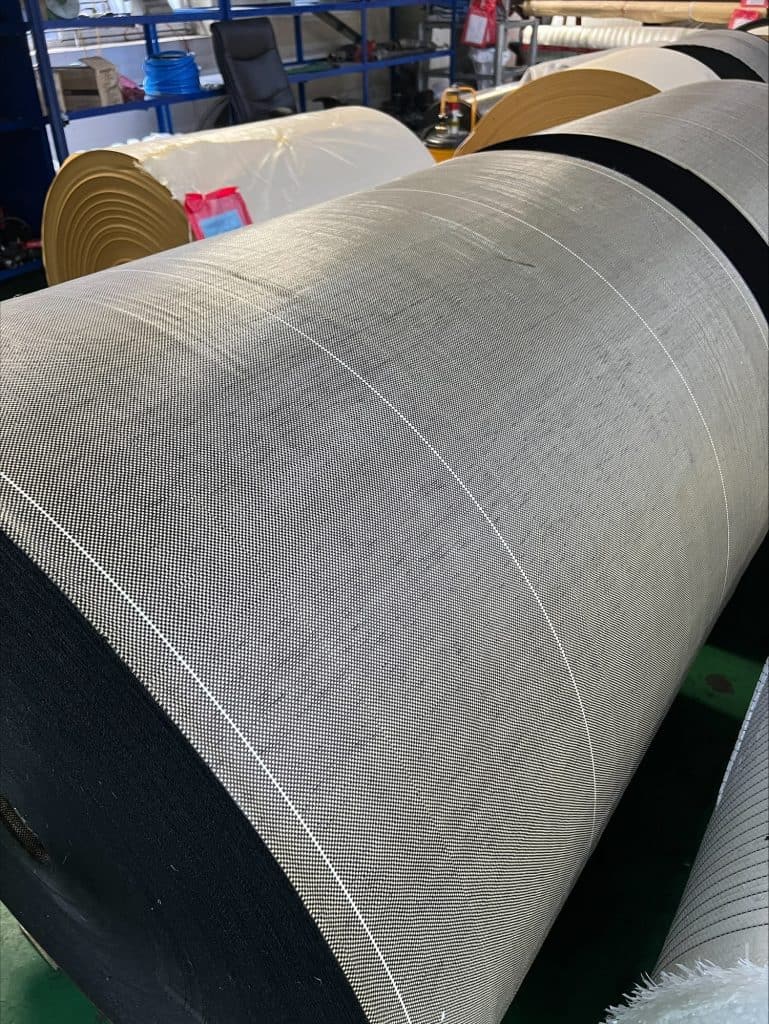
Then we have a new customer who wants to switch to rPP in their Big Bags. In order to ensure that we achieve the required quality, we have now carried out additional tests on the material to get answers that the material meets the requirements set to pass the certificates. In order for us to pass the tests, there is a lot of preparation and it is so wonderful to work with such a competent team as we have in Vietnam. I just want to take my hat off and thank our team who did a fantastic job before we were on site. When we were ready to start, everything flowed according to schedule and we got an incredible amount done during those three days.
So what happened during these days you might be thinking. Well, it was a thorough review of what had been prepared before we arrived at the production in Vietnam. We were then given a tour of the production where both fabric and loops from rPP were manufactured. We had to look at the weaknesses that arise with rPP for which we need to try to find solutions, and it cannot be said that it is completely problem-free, but there is hope that we will be able to manage to develop a stable product that can be used on the same manner as a fabric produced from virgin raw material. When the fabric and material for loops were ready, tests were done to measure what differences we get between virgin and rPP. The materials show that we achieve similar results with rPP as a virgin raw material. When the material is evaluated and passes the tests, we moved on to the part where these materials are used in the bags. Now it's time to watch a big bag come into being. The material is cut to the right lengths and the sewing staff is busy sewing every detail which is then sewn into a large sack. To create understanding among us who work at Accon, we arranged for us to test sewing with the machines used to sew large bags and this is not an easy product to produce.

When we finished looking at the big bag manufacturing it was time to look at the testing of the materials produced by rPP and this was going to be exciting. Will the product be able to pass the test requirements or not? I was positive right from the start but maybe some of us were a little nervous that it would be a bad result. And how did it go? Well then it looked good and it is a little lower than virgin material but still within tolerances.
When the tests are well done, we move on to the next step where we have produced a large sack according to the specification that is linked to our customer's article. There may be certain requirements from the customer that give us poorer conditions to succeed with the tests. In this case, as the top lift test shows, the customer has a requirement that the loops should not be sewn so far down the fabric. Probably because the pressure is affected by the loops so we don't have the opportunity to sew the loop far enough down into the fabric reinforcement. What is affected is that we will get a result where the fabric breaks earlier when the load has not been distributed sufficiently.
After this trip, we have more experience with us and now we look forward to seeing our customers start testing the possibilities of starting to use large bags from recycled PP. Our machinery shows that we can produce the fabric and the result is satisfactory. Feel free to contact us for advice and tests and we will be able to support you in the transition that leads to reduced Co2 emissions and a reduction in abuse of the earth's resources.


Micael Rahm, managing director, Accon Greentech AB, is the author of the sustainable blog.
